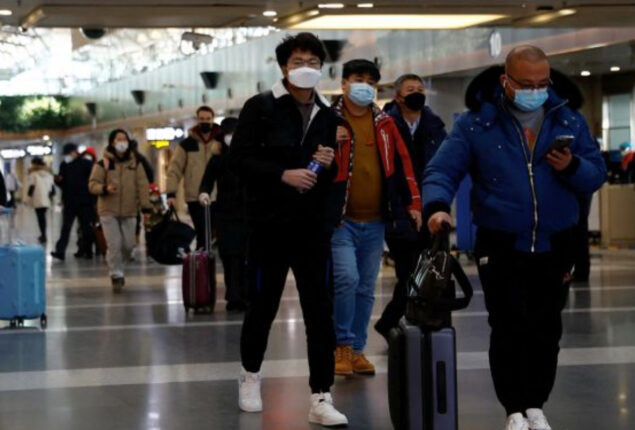China’s population has declined for the first time in 60 years
The population decreased by 850,000 from 2021 to 2022, reaching 1.4118 billion....

China: As holiday travel increases, critical COVID cases have peaked
The number of COVID patients requiring critical care in Chinese hospitals has peaked, according to health officials, as millions travel across the country for long-awaited family reunions, raising fears of new outbreaks.
Since abruptly removing anti-virus controls that had protected China‘s 1.4 billion people from the disease for three years last month, there has been widespread skepticism about China’s official COVID data.
China revealed on Saturday that nearly 60,000 people with COVID died in hospitals between December 8 and January 12, a tenfold increase from previous disclosures.
However, that figure excludes those who die at home, and some Chinese doctors have stated that they are discouraged from including COVID on death certificates.
According to the latest forecasts from UK-based health data firm Airfinity, as travel increases during the busy Lunar New Year holiday season, up to 36,000 people could die from the disease each day. Other experts predict that more than a million people will die from the disease this year.
However, a National Health Commission official stated at a press conference on Thursday that China has passed the peak period for COVID patients in fever clinics, emergency rooms, and in critical condition.
According to an official, the number of patients in critical condition in hospitals was more than 40% lower on Jan. 17 than at the peak on Jan. 5.
The new data comes after President Xi Jinping expressed concern that rural areas would be unprepared to deal with an increase in infections as the holidays, which begin on January 21, bring throngs of city dwellers back to their hometowns.
Affinity estimated on Wednesday that 62 million people could be infected with the virus between January 13 and January 27 and that COVID-related daily deaths could peak at 36,000 on January 26, a significant increase from previous estimates.
“Our forecast predicts a significant burden on China’s healthcare system over the next two weeks, and it is likely that many treatable patients will die as a result of overcrowded hospitals and a lack of care,” said Airfinity’s analytics director Matt Linley.
Beyond the death toll, there is hope that China’s reopening will reenergize a $17 trillion economy that is experiencing one of its lowest growth rates in nearly a half-century.
After years of virus restrictions and a recent wave of infections disrupted business, owners and managers of China’s factories, which produce nearly a third of the world’s manufactured goods, hope to return to normalcy.
The IMF’s Deputy Managing Director Gita Gopinath said on Wednesday at the World Economic Forum in Davos that China could see a sharp recovery beginning in the second quarter.
These expectations have propelled China’s stock markets and the yuan currency to multi-month highs in recent sessions.
Chinese-controlled Hong Kong, which is attempting to revitalize its finance and trade-dependent economy, announced on Thursday that people infected with COVID-19 will not be required to quarantine beginning January 30, removing one of the city’s last major virus restrictions.
Catch all the China News, World News, Breaking News Event and Latest News Updates on The BOL News
Download The BOL News App to get the Daily News Update & Follow us on Google News.